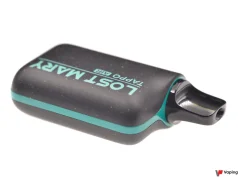On June 1st, the Los Angeles City Council voted in favour of a ban on non-tobacco flavoured vaping products, flavoured cigars and menthol cigarettes, at 12 to 1. The ban was pushed by the Michael Bloomberg-funded Campaign for Tobacco-Free Kids (CTFK) and it now sits on Mayor Eric Garcetti’s desk, who’s expected to sign it.
“We just took a huge step forward against Big Tobacco’s deadly agenda in Los Angeles.” said Councilmember Mitch O’Farrell in a tweet. “We just took a huge step forward against Big Tobacco’s deadly agenda in Los Angeles. This morning, I led the City Council’s unanimous approval of a prohibition on the sale of flavored tobacco to everyone 21 and younger in LA, making us the largest city in California and the nation to take this kind of action against these products,” he added despite the fact that the ban applies to everyone, not just those below 21.
Real life data does not indicate promising results
Sadly, a study published in JAMA Pediatrics, found that following San Francisco’s flavour ban, teenagers in the city’s high schools were more likely to take up smoking than teenagers in school districts with no such ban in place.
In August 2020, SB 793 by Senator Jerry Hill, banned the sale of flavoured tobacco products, including non-tobacco products such as e-cigarettes across the city of San Francisco. The study titled, “A Difference-in-Differences Analysis of Youth Smoking and a Ban on Sales of Flavored Tobacco Products in San Francisco, California,” aimed to determine any relationship between San Francisco’s ban on flavoured tobacco product sales and smoking among high school students younger than 18 years.
The city’s chief economist had predicted that the money spent on vaping products prior to the ban would still be spent on other nicotine products such as conventional cigarettes. In line with expert predictions before the ban had even gone into effect, the researchers found that following the ban, teenagers in the city’s high schools were more likely to take up smoking than teenagers in US school districts where no flavour bans were imposed. While prior to the ban, smoking rates in San Francisco were similar to those of many cities across the country.
“To understand this conceptually, think about youth preferences between tobacco products,” said study author Abigail Friedman, an assistant professor in the Department of Health Policy and Management at the Yale School of Public Health, in a statement. “Among youths who vape, some likely prefer ENDS to combustible products because of the flavors.”
“For these individuals as well as would-be vapers with similar preferences, banning flavors may remove their primary motivation for choosing vaping over smoking,” she continued. “Thus, some of them will respond to a ban on flavors by choosing to use combustible products instead of ENDS.”
Previous data compiled from a convenience sample of residents of San Francisco, California, aged 18 to 34 years who had ever used a tobacco product, had already shown an increase in combustible cigarette use (smoking) among those aged 18 to 24 years.
Read Further: Filter
Bans on Flavoured Vapes Would Push Some Users Back to Smoking








